Rigoletto
The opera that made Verdi change path…
He was 37 years of age, and he had already written 16 great operas. These had made him a celebrity. He was regarded as the nr.1 Opera-composer in Italy. Titles such as Nabucco, Ernani, Attila, and Macbeth had made him famous far beyond the theater realm. And he was successful to a degree where he was financially and politically independent. He could write what he wanted and didn’t have to fear censorship or an occasional failure.
So, when he started working with Rigoletto, he entered a new track. Up til this point, his operas had been about great heroes, heroines from the past. Historical dramas mostly without any explicit applications to his own time, or the problems of the modern world (Yes, he was involved in the independence movement to free Italy. But that wasn’t very controversial).
With Rigoletto, his choice of subjects changed. Rigoletto was the first of three operas, that would later be labeled, La trilogia popolare, The folk trilogy and more common the Verdi Trilogy. Popolare meaning about common folks and not popular as in well-liked. Other than Rigoletto, the label includes La Traviata, and Il Trovatore.

Premiere – March 11, 1851, Teatro La Fenice, Venice, Italy
Composer – Giuseppe Verdi
Librettist – Francesco Maria Piave
Running Time – Around 2 hours, plus Intervals
Three Acts
Ouverture – 2 minutes
Act 1 – ca 54 minutes
Act 2 – ca 31 minutes
Act 3 – ca 32 minutes
In Italian
Main characters
- Rigoletto, Jester at the court of the Duke of Mantova: Dramatic baritone. He’s also described as deformed, a hunchback.
- Duke of Mantova: Lyric tenor.
- Gilda, Rigoletto’s daughter: Light soprano (More about the voice of Gilda here).
————————–
- Sparafucile, a professional assassin; Bass.
- Maddalena, Sparafucile’s sister: Contralto.
- Giovanna, Gildas nurse: Mezzo-soprano.
- There’s only a male chorus, Courtesans of the court of Mantova.
Based on the screenplay Le roi s’amuse by Victor Hugo
Download this short Pdf-guide. Print it, fold it, and keep it in your pocket as a help when you’re at the Opera. Please keep your phone turned off when inside the theater.
Background – The Opera Rigoletto is set in…
Mantova, Italy. The 16th century. (More about the reason for this here.).
Today Mantova (Mantua) is a small town in the very fertile Po valley, but up until the beginning of 1700, it was a significant economic and military power base. This explains the role of the Court. The Duke of Mantova has immense power and no shortage of money. So, he can do whatever he wants. And since he has no scruples or doubt about his divine powers, he does just that… He especially does what he wants with all the beautiful daughters and wives of noblemen of lesser or higher ranks.
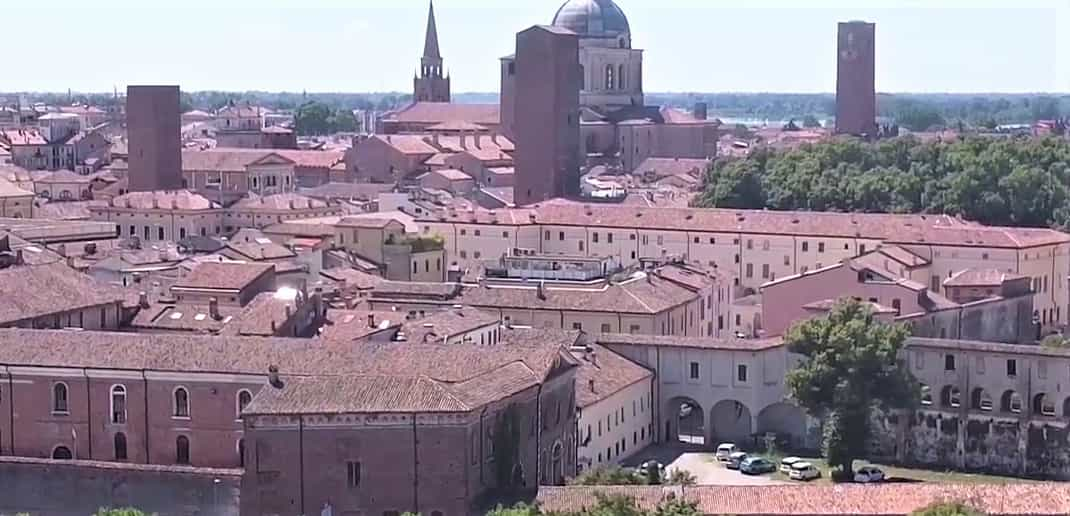 He is surrounded by a hoard of yes-sayers and wannabes. And to his help, he also has his trusty Jester, Rigoletto. This latter is not a thoughtful and empathetic assistant, but rather a cruel handyman for all the Duke’s adventures. He is the fool, despised by all, but protected by the Duke.
He is surrounded by a hoard of yes-sayers and wannabes. And to his help, he also has his trusty Jester, Rigoletto. This latter is not a thoughtful and empathetic assistant, but rather a cruel handyman for all the Duke’s adventures. He is the fool, despised by all, but protected by the Duke.
Although it is a story set in the 1500s, the subject of the story is very modern.
- Innocent girls are attracted to men with power.
- Men with power take advantage of innocent girls.
- Other men don’t have the courage to question even the worst of conduct if the conducting part is powerful.
And Verdi began working with the new material. His musical style changed somewhat. With Rigoletto, Verdi initiates the middle period of his creative life. This is the first of three operas, Rigoletto, Il Trovatore (The Troubadour), and La Traviata, known as the Verdi trilogy. In all these operas, Verdi paints a human perspective, much closer to later operas by the great Verismo composers. Just think about the final scene, when Rigoletto discovers the gruesome truth. The subjects are general, from our own psychological interiors, and with a much sharper focus than before. The drama is about our deepest feelings, rather than abstract moral questions.
These three operas made Verdi an international superstar. And of all his operas, Rigoletto and La Traviata are, together with Aida, today the most played worldwide.
Plot
Ouverture.
First Act
Part 1 – A ball at the Ducal Palace (Palazzo Ducale) in Mantova.

There are all the Duke’s friends and minions, a lot of young and beautiful women (some of which are relatives to the present men), and of course the Duke and Rigoletto. The Duke tells his friend Borsa about a beautiful girl he often sees after mass. He is in love… As much as possible for a superficial and cynical ladies’ man like him. Another important fact is that he knows where she lives. And he knows there’s a man entering her house every evening… A lover, a husband…
He sings his first aria:
– Questa o quella… (This one or that one… To me they are all the same.)
After that, some of the noblemen lose themselves in the latest talk of the town:
– Rigoletto, the fool, has a sweetheart, strange as it may seem.
Rigoletto is challenged by Count Ceprano, whose wife the Duke has decided as his next conquest. You may think that he should challenge the Duke, but Rigoletto is an easier target. And we understand that the Jester really isn’t a very nice guy. He constantly mocks the cheated men. And he often goes one step too far. But as he’s protected by the Duke, no one can touch him.
Two things are important for the continuation of the story:
- The Duke tells Rigoletto that he aims to kidnap the wife of Ceprano that same night.
- Count Ceprano and some of the other men swear revenge on Rigoletto.
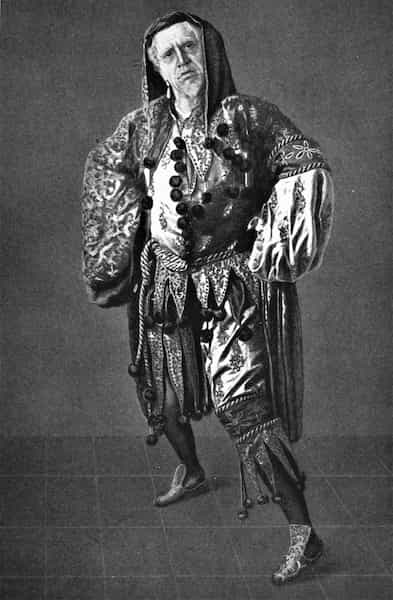 Now the next important scene. Count Monterone enters. He accuses the Duke of having destroyed his family’s name by seducing his daughter. The Duke obviously just arrests him but before leaving he utters a terrible curse on the Duke. But more so on Rigoletto, who is deeply concerned by it. This curse with its recognizable theme will come back on various occasions during the opera.
Now the next important scene. Count Monterone enters. He accuses the Duke of having destroyed his family’s name by seducing his daughter. The Duke obviously just arrests him but before leaving he utters a terrible curse on the Duke. But more so on Rigoletto, who is deeply concerned by it. This curse with its recognizable theme will come back on various occasions during the opera.
Part 2 – A dark alley on the outskirts of town.
Rigoletto encounters a strange and dislikable person. His name is Sparafucile (meaning rifle-shooter in Italian). He is to offer his services to Rigoletto. We now know the context in which the people in the story and the citizens in the city live. And as Sparafucile has information about the woman Rigoletto jealously hides within his residence, he asks if he is in need of assistance. Sparafucile is a hired killer. Rigoletto says that for now, he doesn’t need him.
He then sings his aria:
– Pari siamo!… io la lingua, egli ha il pugnale. (We are the same… Me with words, and him with the blade.)
Gilda comes out to greet her father. Inside there is also Giovanna, the housemaid. In the following scene more things are revealed:
Gildas’s mother is dead, and Rigoletto is extremely protective of his daughter. From experience, he knows what can happen to young girls if they’re not kept safe. Giovanna has orders to guard her like a watchdog.
- But the Duke has already made himself known to Gilda under the name of Gualtier Maldè, a poor student.
- And Gilda is already charmed by him to a point where she would let him into the house.
- The Duke bribes Giovanna and enters the house when Rigoletto leaves.
So, the two lovebirds have a short dialogue before the Duke is sent away.
Gilda alone sings her most famous and most difficult aria:
– Caro nome che il mio cor… A very long aria with lots of delicate pianissimi notes, and a number of coloratura. And the orchestra is weak and doesn’t really help the singer at all. A difficult piece, especially if the singer is a lyric soprano.
At the end of the aria, we see a group of men approach from the street. These are the courtiers and they are there to kidnap Gilda. What happens is that somehow they encounter Rigoletto. It wasn’t planned but since they have him there they decide to kill two flies with one blow. Marullo, one of the courtiers speaks:
– We are here to grab the wife of Ceprano…
And Rigoletto buys it, hook, bait, and all. So they put a mask on him, as they too wear masks. It’s just that Rigoletto can’t see anything through his mask. He’s blindfolded. And while just holding the stair for the kidnapers, he actually helps them to get into his own house.
– Zitti, zitti moviamo a vendetta… (Silent, silent let’s get our revenge…)
This is a genius little piece for the chorus. Soft, staccato, and fast. Not easy to perform, but if it’s done well, it’s a masterpiece that illustrates how volatile and illusive guilt is when the guilty is just following where the wind blows and the responsibility is to be found elsewhere.
Too late does Rigoletto grasp where the ladder is pointing and what really has happened. In his despair, he calls out the curse theme:
– La Maledizione!
Second Act – Back in the Palace.
In one of the luxurious rooms. The Duke sings his second aria:
– Ella mi fu rapita! / Parmi veder le lagrime… (They stole her from me…)
He came to Gildas’s house right after the kidnapping took place, and now he’s angry because someone else got the nerve to snatch her right in front of him. All the courtesans enter and tell him that they are the ones that took Gilda. To play a trick on Rigoletto, they accidentally assisted the Duke. More so, at that very moment, Gilda is right there inside the palace. The Duke is overwhelmed by joy and rushes away to meet her.
Now we are at the key scene in the entire opera. Rigoletto enters. singing his famous Jester theme:
– Lala… lala… lala!
All the others act as if nothing has happened. Rigoletto does so too. Like dogs circling each other before the fight…
A page enters. The Duchess wants to talk to the Duke.
– He’s sleeping… No, he’s out hunting, the courtesans tell her
– What? All by himself?
And suddenly Rigoletto understands that his daughter is with the Duke. When the mob understands that Gilda is not Rigoletto’s lover but, in fact, his daughter, the joke becomes even crueler… And more interesting to them.
And here comes a true masterpiece, that shows the genius of Verdi.
– Cortigiani, vil razza dannata… (Courtiers, You cowered and damned race…)
The aria starts out with a Rigoletto who is furious. He curses and swears at his opponents. But when that doesn’t work he tries to reason with them, pleading… And finally, when not even that has any effect, he just collapses in desperation and self-pity. It’s a fantastic demonstration of what losing everything can do to a person. When all that keeps you alive suddenly crumbles.
Gilda comes out from the Duke’s bedroom. Rigoletto still tries to tell himself that nothing’s happened. That it was all just a joke. But when he sees the tears on his daughter’s face, his rage slowly turns towards the Duke. Gilda and Rigoletto sing a duet expressing their sorrow and disillusion.
– Tutte le feste al tempio / Solo per me l’infamia…
Now, Monterone (… Remember him? The one who cursed the Duke and Rigoletto?) is walking by in chains. Seeing the portrait of the Duke he utters:
– … Seems my curse had no effect. You will live, and happily so…
Rigoletto replies:
– No, you’re wrong old man. You will have your revenge!
The act finishes with another masterpiece.
– Sì, vendetta, tremenda vendetta… (Yes, revenge… Like a thunderbolt hurled by god, the Jester will get you.)
A short duet where Rigoletto expresses his determination while Gilda, well she is mostly just confused…
Third Act – Night at a desolated tavern at the banks of the river Mincio.
The conclusion is near. As Gilda is still in love with the Duke, her father has brought her to this shabby place to let her witness the Duke in action. In fact, he is now courting Maddalena, the sister of Sparafucile. Gilda and Rigoletto watch them from the outside.
The solution with four persons interacting – singing together – while in different situations, or/and as in this case, two not knowing about the others, isn’t unique. But Verdi creates a very convincing setup. In the score, Rigoletto and Gilda watch the Duke and Maddalena through a crack in the wall.
The Duke sings one of the most famous opera arias of all time:
– La Donna è mobile…
Then all four perform one of the most famous quartets of all time:
– Bella figla dell’amore…
Rigoletto sends away Gilda telling her to immediately travel to Verona where she will be safe. Then Sparafucile meets up with Rigoletto and collects half of the payment for the assassination of the Duke, who is sleeping on a couch. The other half will be paid at delivery.
… But Gilda hasn’t left. She is still there and she hears the following dialogue between Maddalena and Sparafucile. Maddalena too fancies the handsome man and wishes to save him.
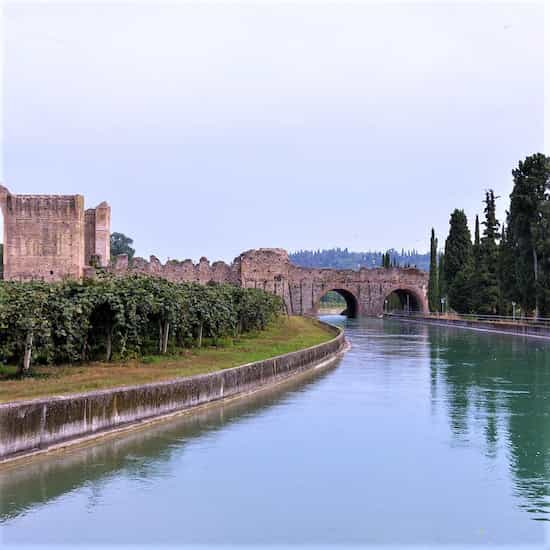
– Kill the hunchback instead, she proposes. He will carry the rest of the money with him and you will still have full payment for the murder.
– What? says Sparafucile. What are you suggesting? Are you calling me a thief?
In the end, they decide to kill the Duke but if anyone else would come to the tavern before midnight, they will kill him instead.
Verdi makes this scene very effective. The chorus sings the storm off stage. A chromatic scale rising and falling. So do the strings. The rain is whipping the tavern and the wind is howling. it is dramatic.
And so Gilda decides to sacrifice herself for the Duke. She enters the tavern and Sparafucile kills her.
The last scene could have been from a novel by Kafka. Rigoletto waits. Then the bell strikes midnight. Sparafucile hands him a body sack. Rigoletto pays him. As he works his way towards the river, he hears the Duke’s voice in the distance…
– La donna è mobile…
…
Things to look out for.
First Act
2 minutes – Questa o quella… The Duke’s first aria.
9 minutes – Monterone enters and curses both the Duke and Rigoletto.
15 minutes – Rigoletto is approached by Sparafucile.
19 minutes – Pari siamo!… Rigoletto’s reflection over the evil and injustice in this world.
41 minutes – Caro nome… Gildas big aria.
Right after Gildas aria, the band arrives. Rigoletto gets blindfolded and tricked to hold the ladder while they kidnap Gilda.
Second Act
0 minutes – Ella mi fu rapita… The Duke’s second aria.
8 minutes – Lala, lala… Rigoletto enters.
12 minutes – Cortigiani, vil razza dannata! Rigoletto’s despair on having lost his most precious treasure.
27 minutes – Monterone passes in the courtyard. Rigoletto is determined to take revenge.
28 minutes – Sì, vendetta, tremenda vendetta. Rigoletto and Gilda together.
Third act
2 minutes – La donna è mobile. The Duke’s third aria.
7 minutes – Bella figlia dell’amore… Quartet, The Duke, Maddalena, Gilda, and Rigoletto.
13 minutes – You hear the storm from a distance. Chromatic scales in the chorus and strings.
17 minutes ca – The negoziation between Sparafucile and Maddalena beginns.
20 minutes – Gilda is stabbed.
24 minutes – Rigoletto gets the body bag.
28 minutes . Final duet. Rigoletto and Gilda.
Something about Rigoletto.
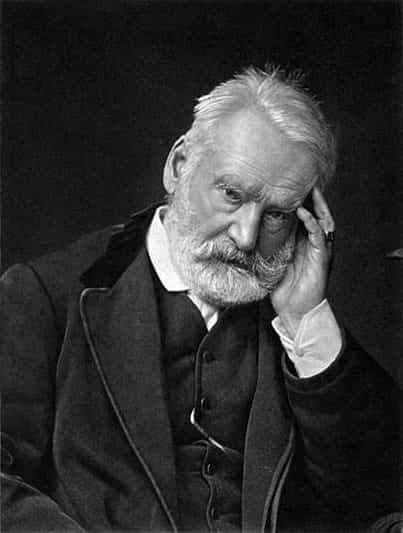
Victor Hugo’s play Le roi s’amuse(The King amuses himself), premiered on November 22, 1832. Only one representation before the French censors banned it. Hugo sued the ministry but lost and the play was not performed again for 50 years.
When Verdi got hold of it, it was already a burning subject. First, the title The King amuses himself, was out of the question. For a long time, Verdi insisted on La maledizione (the curse) as the title. Monfalcone’s curse is the theme around which the story unwinds. Then he went for the name of the main character. But Triboulet (Triboletto in Italian) also risked problems with censorship. So using the French word for having fun, rigolet, Triboletto became Rigoletto.
Secondly, the King couldn’t be portrayed as a King. So, Verdi made him a Duke. And a Duke of a great and important city-state that fortunately didn’t exist anymore in the 1850s.
Lastly, the opera was commissioned by La Fenice in Venice. And Venice was probably the one place in Europe where censorship was weakest. The Austrians wouldn’t allow anti-Austrian expressions, but apart from that, almost anything could be shown in the most decadent of Europe’s cities. Still, Verdi fought a lot with the censors. As an example, Rather than safeguard the nobleman’s name and honor, they argued that he should be punished for his behavior.
About the voice of Gilda.
Many other lead characters in the operas have the same type of problem:
You need to express different emotions throughout the evening, and sometimes one voice just isn’t enough. See my thoughts about Violetta in La Traviata.
This affects sopranos more than other voices since they’re often tragic victims. And they are often very young (Madama Butterfly is just 15…)
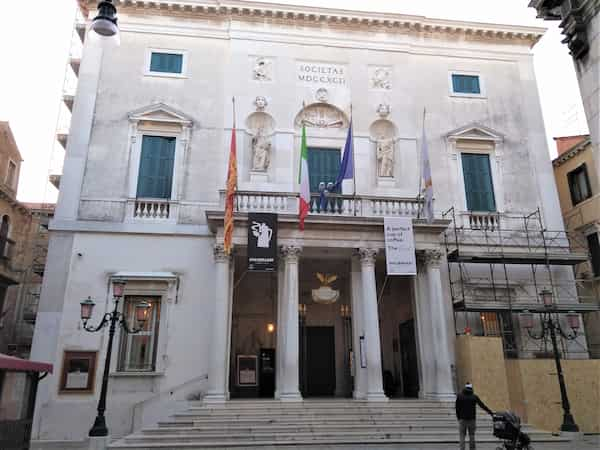
Gilda is usually cast as a light soprano. You would need a very light and agile voice to be able to do the many coloraturas, and the high pianissimi (filato), especially in the most famous aria, Caro nome. And you need to do that one very well. It’s usually impossible to recover from having butchered Gilda’s first aria.
Still, many experts claim that Gildas’s voice should be a lyric soprano (more volume and a richer, warmer sound), or at least a light lyric soprano. That was certainly true a hundred years ago. Back in Verdi’s days, voices were generally lighter and, if I may express my personal view, more natural. They were also generally faster, more agile. The potato-in-the-mouth syndrome was unheard of.
It’s just that sopranos like that can’t be found, or at least are very rare. A theater has to choose… Get a richer, warmer voice that may not do Caro nome very well, or get a light voice that brings down the house after the first aria. A voice that for the rest of the evening can be calm and confident and concentrate on the acting.
Still, there are good light-lyric sopranos who do Gilda extraordinary well. Listen to Nadine Sierra on this page. It’s just that they are rare.
Download this short Pdf-guide. Print it, fold it, and keep it in your pocket as a help when you’re at the Opera. Please keep your phone turned off when inside the theater.